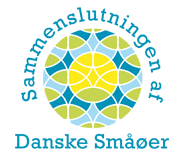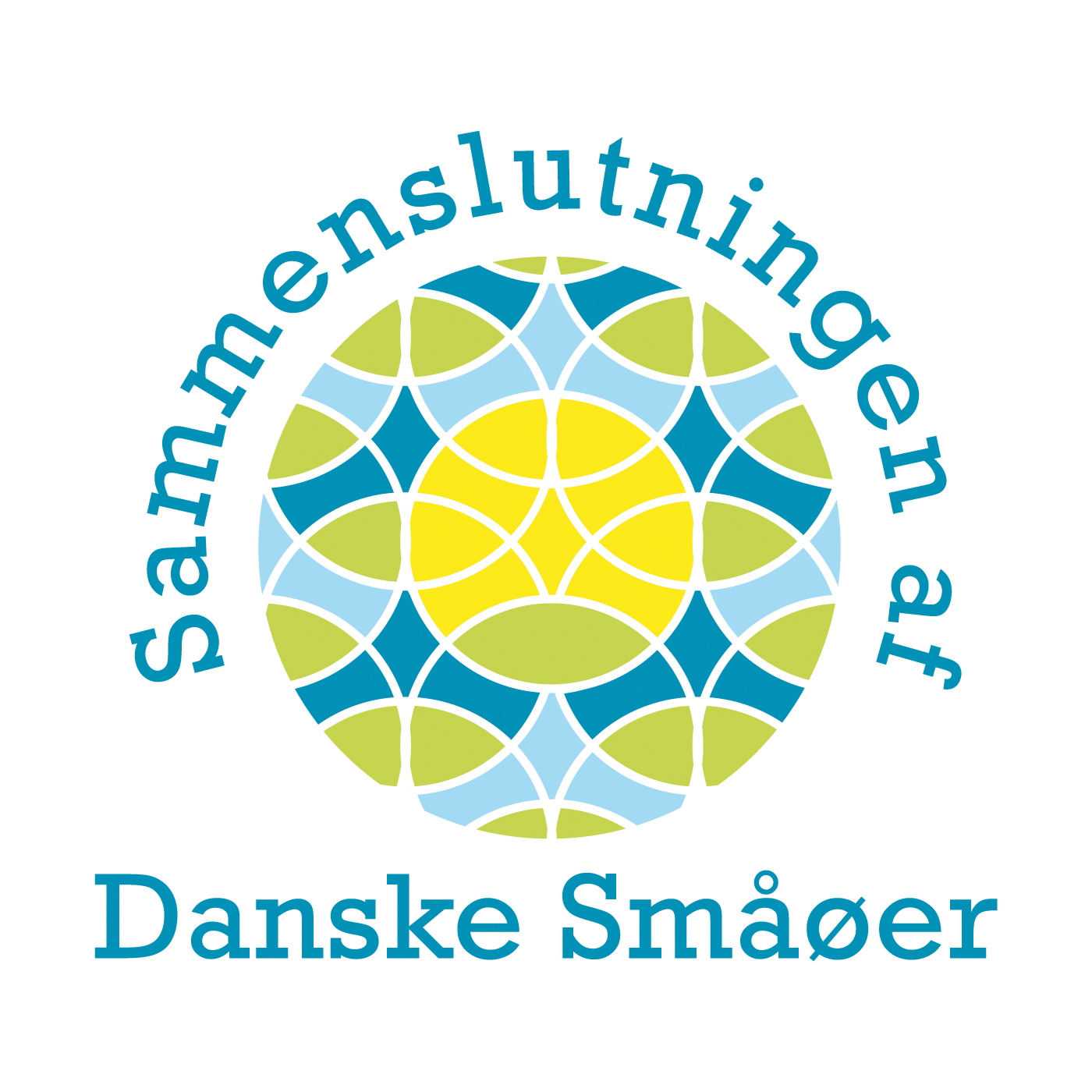English presentation
The Association of Danish Small Islands
Sammenslutningen af Danske Småøer
Background and membership
– The Association of Danish Small Islands (Sammenslutningen af Danske Småøer) was founded in 1974 by islanders, and the organization is run democratically by the islanders themselves.
– The Danish association organizes 27 small islands with all-year-populations from about 10 to 900 inhabitants. All together these islands represent a population of about 4,500 inhabitants (4,527 in year 2018).
– Criteria for being a member in the association are the following: that the island is not bridged or have other permanent connection to the mainland; that the island is not an independent local authority (such as a municipality) and lastly that the island has between 20 and 1200 all-year residents. Exemption can be made from the last criteria.
Aims and objectives of our organisation
– The main task is to preserve and develop the small islands as communities of all-year-residents.
– The main issues are infrastructural service, for example ferries, broadband, mobile connections, and acces to public services such as health care and education. Other topics are tourism, housing issues and possibilities for employment of islanders.
– The organisation strives to be the voice of the islanders in the political landscape.
Islands in our organisation
The 27 islands in the Association of Danish Small Islands are scattered all over Denmark, they are as follows (number of residents, year 2018, in paranthesis):
Agersø (173), Anholt (132), Askø (42), Avernakø (110), Baagø (26), Barsø (15), Birkholm (8), Bjørnø (34), Drejø (71), Egholm (53), Endelave (151), Fejø (456), Femø (121), Fur (799), Hjarnø (107), Hjortø (7), Lyø (88), Mandø (40), Nekselø (18), Omø (161), Orø (910), Sejerø (344), Skarø (32), Strynø (182), Tunø (112), Venø (185), Aarø (150).
See map showing the islands here:
Political structure in the organisation
– The Association of Danish Small Islands is run by a board with 8 members. Chairman and vice chairman are elected for a two-year period at our annual general meeting. The remaining six seats in the board rotate between the 27 islands.
– Each island selects one representative who participates in the annual general meeting in spring and in the annual meeting for representatives in the fall. The island representatives are important contact-persons between the islanders and the organisation.
-The 27 representatives at the annual general meeting are the highest authority in our organisation.
Structure of administration
– The association has a secretariat which is situated on the island of Strynø. The secretariat has two staff members, a head of the secretariat (full time) and a secretary(part time). Depending on ongoing projects consultents are also employed by the organisation.
Friends and partnerships
– The organisation works very closely together with the organisation of the LEADER+ for the small islands in Denmark (LAG Småøerne).
– ESIN, the european small island network is a close partner.
– National organisations connected to the ferry service of the small islands
– Several ministries of Denmark
– Rural organisations of Denmark
Funding of the organisation
– The Association of Danish Small Islands are supported by the Danish government with 1,5 mio. dkr. annually (about 200,000 EUR) which is our most important source of funding.
– We receive membership fees from the 27 island community organisations, a total of app. 120,000 dkr. (about 16,000 EUR).
– Finally we receive funding from the ministry of culture of app. 50,000 dkr. (about 6,600 EUR).
Funding for projects on the islands
– Islanders on the 27 islands can apply for project funding, that is administered by The Danish Business Authority. Every year app. 5 mio. dkr. (about 660,000 EUR) is distributed to the 27 islands for projects of cultural or job-creating character.
– Our 27 islands are also included in EU-programs. We have a LEADER+ group for the 27 small islands (LAG Småøerne).
– Other national sources of funding which can be used by rural areas in general and therefore also by small islands.
Funding for ferry services
Ferry services are financially supported by the national government and local municipality. Most of the ferries are owned and run by the municipality. Only very few are owned and run by private companies.
Travelling is free for resident islanders (for person and bicycle) since 2001.
Since 2015 special subsidies have been introduced to reduce the prize for goods and since 2016 also for passenger tickets (for cars and tourists for example).
Ferry services and other kinds of transport
– Ferry services are financially supported by the national goverment, county and local muncipal with one third from each.
– Most of the ferries are owned and run by the municipals, sometimes in cooperation with the counties. Only very few are owned and run by private companies.
– Islanders have a seat on some of the Boards which have responsibility for ferries but not on all of them. In some of the ferry-boards islanders have a seat, in others not.
– Travelling is free for islanders but we have to pay for goods, cars, etc.
– One island has a regular airservice run by a private firm.
– Only a few of the islands have got public buses.
Infrastructure
– Most of the piers and roads on islands are the responsiblity of the municipal. Although some of the islands have privately owned harbours. A few of the smallest islands do not have public roads.
– In general, satisfactory phone services at all islands.
– Possibility for ISDN-connection at most islands, at 17 of the islands possibilities for ADSL-connection. At the islands south of Funen is an islander establishing a wireless broadband-access.
Housing
– Many of the houses in the islands are used as summerhouses. There is national legislation which limits this but it is possible to get an exemption from this legislation. In Denmark it is not legal for foreign citizens to buy summerhouses.
– The Danish islands have not quite yet the same symptoms as some other countries; that house-prices at the islands increase rapidly. You can get a good house for 500.000 – 800.000 dkr. (65.000 – 110.000 Euro).
– It is often more difficult to get loans for buying houses on the islands than on the mainland.
– In some of our islands new houses are being built, some for sale and some for rent.
– It is our impression that there is a small but increasing interest to be an islander. We are working to strengthen these tendencies.
Employment
– Traditional employment such as farming, fishing (only at some islands) and crafts are still important in the islands, but do not employ many people and have not done so for the last 30 – 40 years.
– Many islanders travels to jobs on the mainland (depends of course of distance from mainland).
– Some islanders have jobs in local shops or in the services available at the island, such as school, church, ferry, nursing, etc.
– Tourism is increasing and in summertime many islanders are a part of this sector. Tourism is very important for the economic life of the islands.
– Increasing interest in distance-working based on IT.
Delivery of public service
– The municipal is responsible for roads, waste depositing, education until highschool level and for public health-service.
Access to health & education
Health
– 7 islands have got a resident doctor
– 9 islands have got a resident nurse, some with more competence than others
– 14 of the islands have not got either resident doctor or nurse.
– Most of the islands have got elderly services, in some of the islands serviced by resident personel, other serviced from the mainland.
Emergency services
– Almost every island has the possibility to require helicopter in cases of serious emergency
– The ferry can be called in cases of emergency where the helicopter is not needed.
– Most of the islands have got voluntary fire services
Schools
– 11 of our islands have still got schools. Most of them only offer teaching for children in the age of 6 to 11 years. Older children have then to go to the mainland. Few islands have teaching for older children.

